Using a neutron spectrometer on board the Dawn spacecraft, scientists have found elevated concentrations of hydrogen in Ceres’ Occator Crater, which provides evidence of an icy crust. Plus, everything is on fire in the western United States, and we review “The Past is Red” by Catherynne M. Valente.
Podcast
Transcript
Hello and welcome to the Daily Space. I am your host Beth Johnson, and I am here to put science in your brain.

It is apparently Venus flyby season. In our last episode, we brought you BepiColombo’s flyby of Venus, and today we have the flyby of Solar Orbiter. Both these spacecraft are using the gravity of Venus to adjust their orbiters to get in closer to the Sun, and neither was really designed to image Venus. This particular image is really weirdly exposed, and instead of showing a nice crescent Venus, it is showing is more of an angry Pac-Man.
According to mission scientist Phillip Hess: Ideally, we would have been able to resolve some features on the nightside of the planet, but there was just too much signal from the dayside. Only a sliver of the dayside appears in the images, but it reflects enough sunlight to cause the bright crescent and the diffracted rays that seem to come from the surface.
As a reminder: Venus is super shiny! And apparently, Venus is going to hold on to its secrets until we can send it one of those new dedicated missions.
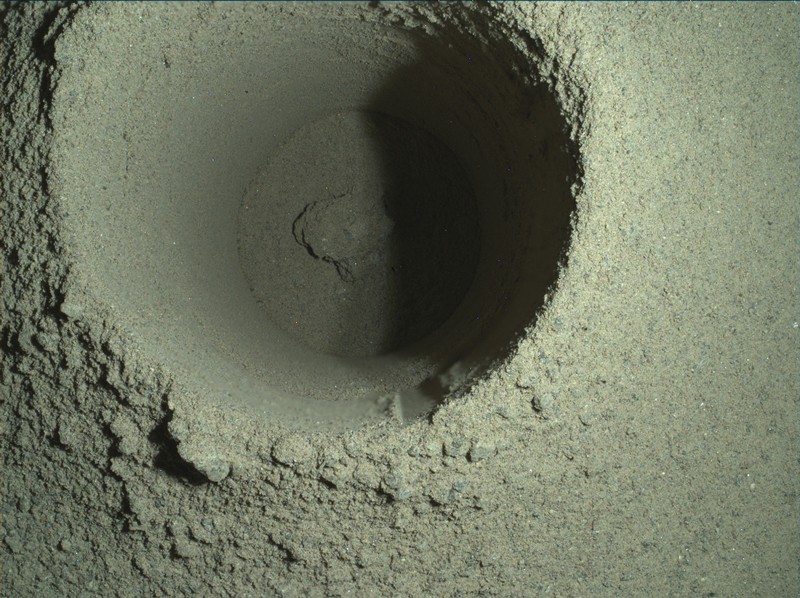
Today is apparently a day for missions to try and do science but come up empty because the planets just aren’t cooperating. From Venus, we now turn to Mars and the Mars rover that literally came up empty. On August 6, Mars Perseverance attempted to collect a sample of a really cool-looking rock. It held out its sample container, it drilled, it looked in its sample container, and it discovered it had picked up nothing.
Nothing.
As the primary mission of Percy is to collect samples of rock, this empty sample container was not good news. For several days, NASA engineers looked at the data, looked at the failed sample, and looked at the telemetry. And on August 11, they shared that, while the rover had done everything right, it turns out the rock was more like sand and when trying to drill out a solid sample that will slide politely into a sample tube, sand is not what you want to dig in. It appears that the drill nicely made a hole in the not-very-rocky rock, and the material just crumbled down the rock face instead of into the sample container. Rather than try again, the rover is going to simply move along. According to mission project manager Jennifer Trosper: We are going to step back and do something we are more confident of.
The rover is now heading toward some nice normal sedimentary rock like we have on Earth and like it practiced on.
From bad Venus images to worse Mars failed samples, and now to climate change. We’re just working to get all the bad news out of the way at the top of the show.
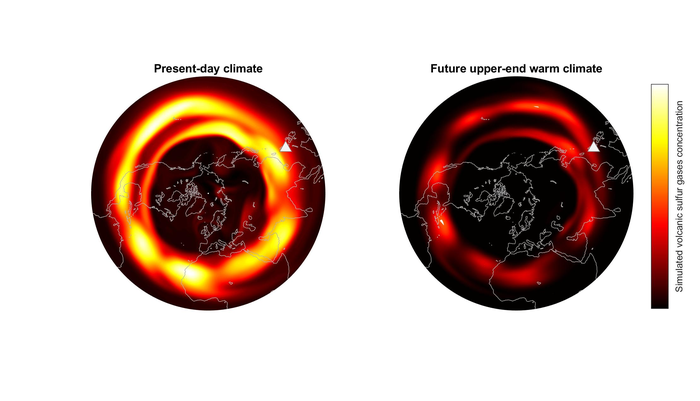
So, let’s get on with the bad news.
Those of you who are Gen X and older, like me, may remember the amazing sunsets of 1992 that were caused by the massive eruption of Mt. Pinatubo. This volcano spewed so much ash into the atmosphere that it scattered sunlight and ever so slightly cooled the planet by a noticeable 0.5˚C on average. Knowing this, many of us have quietly rooted for a massive volcanic eruption in an empty part of the world that might wreck air travel but wouldn’t wreck life and might drop global temperatures to their pre-climate change levels.
Failing that, a lot of mid-sized volcanic eruptions seemed like a nice alternative, but no, while massive eruptions still have the potential to cool our world, our warming planet’s atmospheric layers have expanded, and mid-sized volcanoes just don’t have the power to kick ash into the now-higher tropopause. Instead of ash and aerosols getting suspended in that critical layer and cooling the planet, they will just settle back down.
Who’s with me in rooting for a good supervolcano eruption?
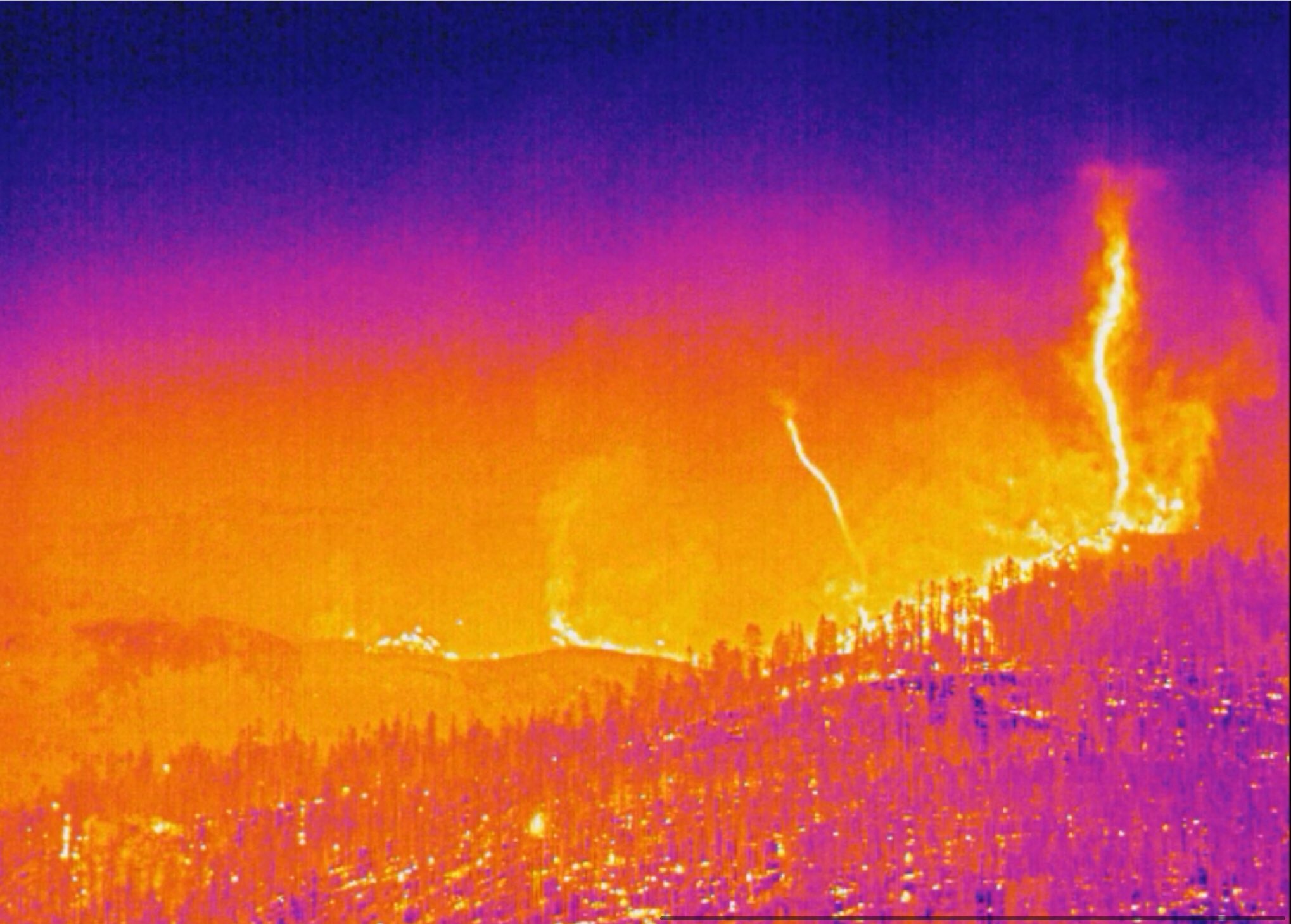
California is on fire. Pamela lived here as a little kid, and I’ve lived here for most of my adult life, and these past couple of years are like nothing either of us can remember. This year’s Dixie Fire has grown to roughly half a million acres in size and is now generating its own weather patterns. And this means there are tendrils of fire reaching hundreds of feet into the air, and the fire-related cloud cover is reaching more than 40,000 ft into the air, essentially making a no-fly zone for even international planes that normally fly around 35,000 ft. These kinds of pyrocumulonimbus clouds can drive winds, generate lightning, and make fires worse instead of better. There are even fire whirls – essentially fire tornados – but instead of carrying off Dorothy to Oz, they simply cook whatever gets caught inside them.
Today, the Dixie fire is the second-largest wildfire in the history of California. It was triggered by PG&E equipment. Yes, California’s electrical company started more fires this year, by accident, and now some news reports are saying this fire will continue to burn until the weather changes and help from rain can be found. Unfortunately, drought conditions and a lowered water table mean we don’t know when that might happen.
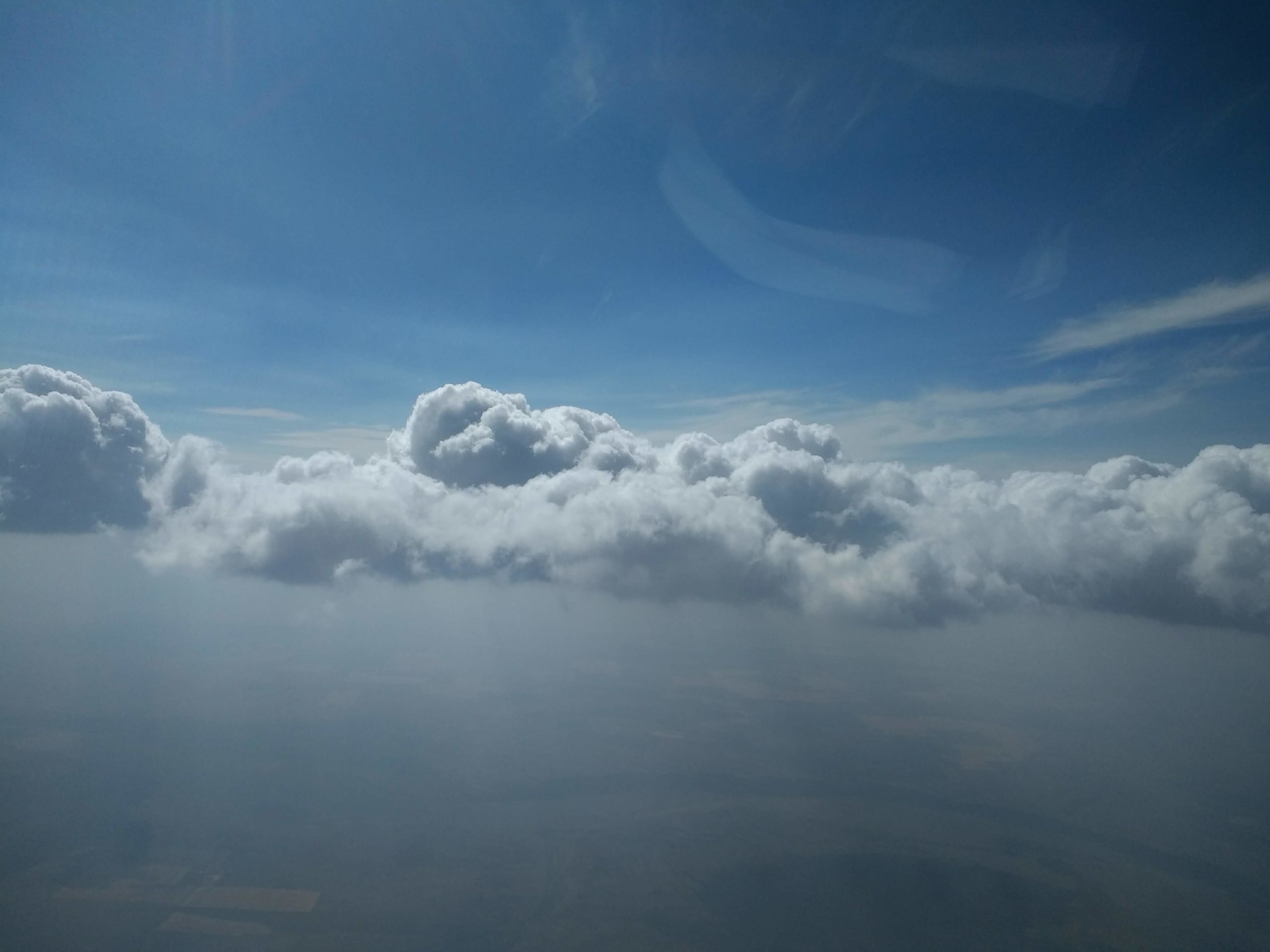
And the fire is not helping the drought. Literally.
A new study in Geophysical Research Letters that was led by Cynthia Twohy shows that smoky air forms clouds that are significantly smaller, reflect a lot more sunlight, and produce less rain than clouds in clean air. Put another way, the drought will be prolonged because the drought-driven fires are creating smoke that reduces rainfall which then lengthens the drought.
This is a cycle that can only be broken if we can stop the fires from starting. Unfortunately, there are folks out there who seem to just want to watch the world burn. While the Dixie Fire appears to have been started by a PG&E equipment accident, an arsonist has been arrested for setting fires designed to trap and kill firefighters while also expanding the fires.
The fires aren’t just wrecking potential for rain; they are also wrecking the groundwater. A review of twelve research papers, written by Alex Tat-Shing Chow, Tanju Karanfil, and Randy A. Dahlgren and appearing in Eos finds that, as fire destroys buildings and infrastructure, it releases toxicants into the soil where they can leech into groundwater. People have complained about smoky-smelling tap water, and research is now showing that the same heavy metals that were known to wash into surface water are also ending up deeper. Processes meant to remove these pollutants can also lead to disinfection by-products that are also harmful. Making things even worse, phosphorus-rich pollutants can trigger algal growth, and that algae can release a wealth of unhealthy toxins as well.
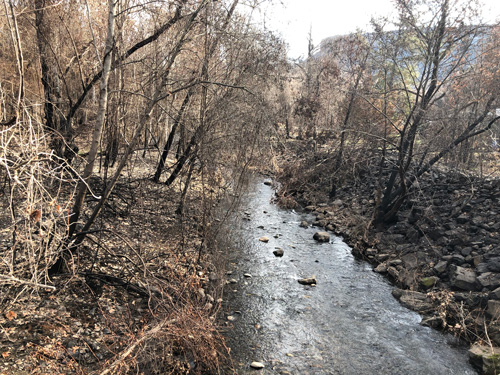
Basically, Fire and Water are enemies, and it turns out, the by-products of fire are out to destroy our water. I like these kinds of things better in a game of Magic the Gathering. These real-world elemental battles are a lot.
Occator Crater on the dwarf planet Ceres gained much attention during the days of the Dawn mission at the small world when bright spots were imaged within the crater. Back in 2015, images were released by the spacecraft’s team that showed these bright spots, and the media coverage went a little wild. There were even some internet comments about the possibility of alien cities, but then, aren’t there always comments about how it’s aliens.
Note: It’s never aliens. Until it is aliens. But I digress.
Over time and much to the dismay of everyone with a vivid imagination, the bright spots in Occator turned out to be brine-related salts or possibly ammonia-rich clays. In 2016, the consensus was that the spots are made of sodium carbonate and indicated some form of subsurface hydrothermal activity. Wait. Hydrothermal activity? Ceres could be another world with a subsurface ocean? Yes. Yes, it could be. And in 2020, NASA confirmed just that, reporting that there is a deep reservoir of brine that percolated to the surface in the crater and other various locations, causing the various bright spots.
Today, in a brand new paper published in Geophysical Research Letters with Planetary Science Institute senior scientist Tom Prettyman as lead author, we have learned that Occator Crater also contains evidence for Ceres to have an icy crust. Using data acquired by the Gamma Ray and Neutron Detector (GRaND) aboard the Dawn spacecraft, Prettyman and his team, which includes several other scientists from PSI, created a detailed map of the concentrations of hydrogen in and around the crater. They found that these concentrations were elevated from what was expected, particularly in the outermost meter of the surface of Occator. This excess hydrogen could be in the form of water ice. On the surface of Ceres.

Now, Occator Crater is a, well, crater, which means it formed as the result of an impact that happened about 20 million years ago. And when a meteor hits a body with enough force to make a crater, it throws material from under the surface up into the atmosphere, of which there isn’t one on Ceres, so some of that material will fall back down to the surface while some is ejected into space. Reminder: rocks are bombarding everything, everywhere in our solar system. Some of that ejecta could even end up here on Earth as it has with Vesta.
This process is how we can now see some of the ice on the surface of Ceres. Prettyman explains: We think that ice has survived in the shallow subsurface during the roughly 20 million years following the formation of Occator. Similarities between the global distribution of hydrogen and the pattern of large craters suggest impact processes have delivered ice to the surface elsewhere on Ceres. This process is accompanied by the loss of ice by sublimation caused by heating of the surface by sunlight.
This particular impact possibly brought up material from as far down as ten kilometers below the surface. Prettyman goes on to note: The findings reinforce the emerging consensus that Ceres is a differentiated body in which ice separated from rock to form an icy outer shell and subcrustal ocean. …the findings could have implications for the evolution of icy bodies, small and large. More broadly, as an ocean world, Ceres could be habitable and is, therefore, an attractive target for future missions.
Ceres could be habitable. Wow. I don’t think Ceres is big enough for space whales, so I’m going to root for space squid instead. And I, for one, welcome our new cephalopod overlords. We really, really need to figure out how to sample the subsurface water on all these ice-covered ocean worlds, please.
Review
We have talked a lot about climate change today and in the past year. We cannot avoid it. It’s happening. And since the pandemic started, I have generally shied away from dystopian novels because they hit a little too close to home. Recently, however, I have become a fan of author Catherynne M. Valente, and so I have been wandering through her books kind of randomly. She writes everything from YA fantasy to a book literally called Space Opera to some franchise novels for Minecraft and Mass Effect.

So when her latest novel, The Past is Red, came out, I immediately snagged a copy and settled in, without really reading the description. Oh, hi, dystopian novel set in a post-climate change Earth. Oops.
But here is the thing. This book was fantastic. I was immediately sucked in and found myself halfway through it in one sitting. I was finished in two days. Valente writes with wit and a sense of wonder that pulls you in and keeps you reading. She is really very talented, and I’m going to do my best to review her latest book without spoiling anything.
As I said, The Past is Red is set in a post-climate change Earth. Think Waterworld but less Kevin Costner and none of the Mad Max-esque villainy. Well, maybe a little of the villainy. The glaciers and ice caps have melted, cities are underwater and gone, the people that caused the problems have a not-family-friendly name I cannot use on air, and all that remains are a few ships roaming the world and a place called Garbagetown.
Garbagetown is what becomes of the Great Pacific Garbage Patch, that floating horror in the Pacific Ocean caused by currents and, well, trash. I don’t think we’ve talked about it on the show before, but it’s a real thing. It’s the size of Texas. It’s awful and horrifying, and in Valente’s novel, it’s where a small fraction of what was humanity has managed to eke out an existence, including the main character, Tetley. Yes, she’s named for the tea, and no, I’m not going to explain why. That’s a key part of the story that I think you need to read for yourself.
Garbagetown has been sorted by types of trash and is thick enough and stable enough to house this tiny portion of the remaining humans. Tetley is the most hated person in Garbagetown, and she is also its savior. This contradiction sets up the story, which is told in a mix of present-day narration and flashbacks. Basically, Tetley prevents a tragedy that no one believes would have happened, and from there, she does everything she can to convince people that Garbagetown is a wonderful place and that there is still hope.
And that’s the big takeaway from the novel for me. Hope. There is still hope for humanity. There is still a lot of awful. But there is also hope. And that is something I think we all need to hold onto. We can get through these times, but it’s going to take work if we don’t want to end up with our great-grandchildren living in a place like Garbagetown. We can and we need to band together and make the world a better place.
This has been the Daily Space.
Learn More
Another Mission Images the Glow of Venus
- NASA press release
Perseverance’s Sample Failure Due to Sand
Effects of Volcanic Ash Change with Climate Change
- University of Cambridge press release
- “Climate change modulates the stratospheric volcanic sulfate aerosol lifecycle and radiative forcing from tropical eruptions,” Thomas J. Aubry et al., 2021 August 12, Nature Communications
California’s Dixie Fire Creates Weather, Fire Whirls
- Dixie fire generates fire whirl, pyrocumulonimbus cloud at 40,000 feet (Los Angeles Times)
Fire-Related Smoke Quenches Rain
- AGU press release
- “Biomass Burning Smoke and Its Influence on Clouds Over the Western U. S.,” Cynthia H. Twohy et al., 2021 July 26, Geophysical Research Letters
Fire-Dissolved Stuff Pollutes Ground Water
Evidence for Icy Crust Found at Ceres’ Occator Crater
- PSI press release
- “Replenishment of Near-Surface Water Ice by Impacts Into Ceres’ Volatile-Rich Crust: Observations by Dawn’s Gamma Ray and Neutron Detector,” T. H. Prettyman et al., 2021 July 21,
Review: The Past is Red by Catherynne M. Valente
- Amazon (affiliate): The Past is Red (Kindle)
Credits
Written by Pamela Gay and Beth Johnson
Hosted by Beth Johnson
Audio and Video Editing by Ally Pelphrey
Content Editing by Beth Johnson
Intro and Outro music by Kevin MacLeod, https://incompetech.com/music/


 We record most shows live, on Twitch. Follow us today to get alerts when we go live.
We record most shows live, on Twitch. Follow us today to get alerts when we go live.